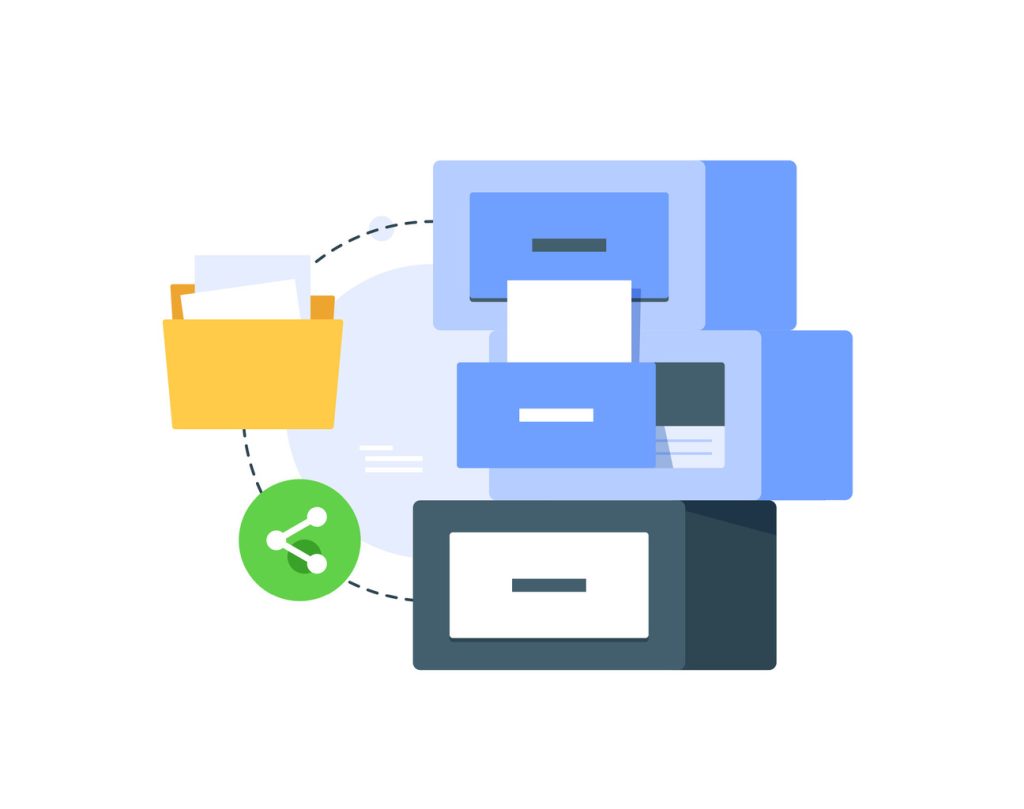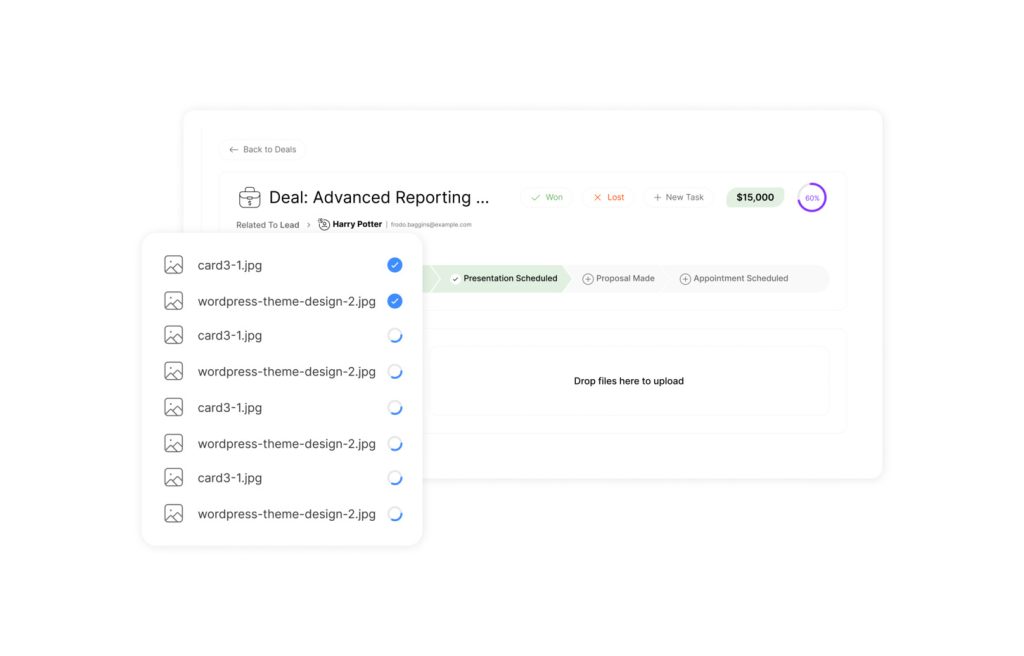Attachments On Every CRM Record: Best Practices for Management

Businesses today handle mountains of digital files—contracts, proposals, client communications—all of which should be neatly organized in a CRM Record for easy access and tracking. Customer relationship platforms offer tools to store these documents directly where teams need them: linked to relevant interactions. But without clear strategies, teams risk drowning in disorganized data.
Effective file management within business systems boosts productivity by cutting search time and ensuring critical information stays accessible. Sales and support teams perform better when they instantly locate updated materials, avoiding errors from outdated versions. Proper organization also reduces redundant files, freeing storage space and lowering costs.
Security remains a top concern. Strict permission settings ensure sensitive client data stays visible only to authorized users. Integrating external cloud storage solutions adds flexibility while maintaining centralized control. These steps create audit-ready systems that meet compliance standards without slowing workflows.
Companies adopting structured approaches transform chaotic digital clutter into searchable, secure repositories. This shift supports collaborative environments where teams share insights faster and serve clients more effectively.
Key Takeaways
- Centralized document storage improves team efficiency and client service quality
- Clear permission settings prevent unauthorized access to sensitive data
- Integration with cloud solutions enhances flexibility without compromising security
- Reduced file duplication lowers storage costs and version confusion
- Searchable systems enable faster retrieval of critical business materials
Overview: Attachments On Every CRM Record

Modern teams rely on instant access to client-related materials during customer interactions. Centralized document systems within business platforms transform scattered data into actionable resources, directly tied to client histories and transactions.
Core Functionality of Document Linking
Business platforms separate file repositories from core databases, keeping each CRM Record lean and focused. This design ensures uploaded contracts, images, and emails are stored in dedicated space linked to the relevant CRM Record. Deleted items still occupy storage within the CRM Record until permanently removed, requiring proactive cleanup routines.
Teams link materials to profiles for deals, contacts, or support tickets. This approach keeps all context in one place. For example, a sales proposal stays connected to its opportunity timeline, while service teams reference past communications without switching tools.
Why Structured Systems Matter
Organized document strategies eliminate time wasted searching through folders. Role-based permissions let managers control visibility—sensitive contracts stay hidden from unauthorized staff. Version tracking prevents confusion over outdated drafts.
- Centralized access reduces duplicate files
- Audit trails automatically timestamp updates
- Collaboration features sync edits across teams
Platforms with integrated storage simplify compliance. Financial firms, for instance, maintain legally required records while ensuring quick retrieval during audits. Properly managed systems turn chaotic digital stacks into streamlined workflows.
Benefits and Challenges of Attachment Management in CRM Record
Centralized document systems transform how teams handle critical materials. Properly managed platforms boost productivity but require strategic planning to avoid hidden pitfalls.
Advantages of Streamlined File Storage
Unified systems slash time spent searching for contracts or proposals by attaching them directly to the appropriate CRM Record. Teams access the latest documents instantly from the CRM Record, whether reviewing sales terms or resolving support tickets. Zoho’s tiered storage model (1GB base + user-based allocation) demonstrates scalable solutions for growing businesses managing increasing numbers of CRM Records.
Key benefits include:
- 40% fewer duplicate files compared to decentralized systems
- Real-time editing permissions for authorized users
- Automatic version tracking with timestamps
Common Challenges and Pitfalls
Storage limits force tough choices. At $4 per 5GB, expanding Zoho capacity adds costs quickly. Teams often struggle with:
| Issue | Frequency | Solution |
|---|---|---|
| Duplicate files | 68% of organizations | Automated deduplication tools |
| Version conflicts | 55% weekly | Mandatory naming conventions |
| Access bottlenecks | 42% of remote teams | Mobile-optimized interfaces |
Security gaps emerge when systems lack download tracking. Regular audits and role-based permissions prevent unauthorized sharing while maintaining workflow speed.
Attaching Files to Your CRM Record

Organizing digital assets within client management platforms requires precise workflows to maintain accessibility. Teams benefit most when documents connect directly to interactions, creating a clear audit trail for future reference.
Step-by-Step Guide for Adding Attachments
Start by locating the relevant profile—whether it’s a contact, company, or sales opportunity. In platforms like HubSpot:
- Open the desired profile from your dashboard
- Scroll to the attachments panel below the activity feed
- Choose between uploading new files from your computer or selecting existing items from the system library
For activities like emails or meetings, use the attachment icon when logging details. This ties files to specific interactions, preserving context for later reviews.
Managing File Sources and Versions
Distinguish between fresh uploads and archived materials to avoid redundancy. Implement these practices:
| Source Type | Best Use | Risk Mitigation |
|---|---|---|
| Local Computer | New contracts or scans | Scan for viruses first |
| System Library | Shared templates | Check expiration dates |
| Email Integration | Client communications | Verify recipient permissions |
“Version control starts with standardized naming—include dates and draft numbers in filenames. Monthly audits prevent outdated files from cluttering profiles.”
Teams should schedule quarterly cleanups to remove obsolete items. Automated alerts for unused files streamline this process, ensuring storage stays optimized.
Best Practices for Permission Management and Secure File Access
Effective document security begins with precise permission controls that align with organizational hierarchies. Tailored access rules prevent data leaks while letting users retrieve materials efficiently.
Building Layered Access Controls
Hierarchical permissions determine who views or edits files. For example:
- Team-based structures: Limit document visibility to specific departments
- Ownership settings: Restrict sensitive files to creators until approval
- Activity-specific protocols: Apply different rules for notes versus meetings
Sales proposals linked to client profiles might require Notes view permissions, while support tickets use task-based access. A customer service account manager can’t view legal contracts without explicit clearance.
| Activity Type | Required Permission |
|---|---|
| Notes | Notes view access |
| Tasks | Tasks view access |
| Emails/Calls | Record access rights |
“Quarterly permission audits catch outdated access levels before they become risks. Automate alerts when roles change.”
Combine time-based restrictions with download tracking for high-risk materials. These measures maintain workflow speed without compromising compliance.
Advanced Techniques: Managing Attachments in Activities and Tasks

Strategic document management extends beyond basic file storage when teams engage in active workflows. Sophisticated approaches connect materials directly to ongoing tasks and communications, creating dynamic reference points for collaborative teams.
Integrating Attachments in Logged Activities
Teams attach files directly to logged activities like calls or meetings. For new entries:
- Click the activity icon in your dashboard
- Use the paperclip tool within the editor
- Choose between fresh uploads or existing library items
Editing existing activities follows similar steps. Hover over the target entry, open its text box, and use the attachment option. Sales teams often link proposals to discovery calls, while support agents attach troubleshooting guides to ticket updates.
Managing CRM Record Attachments Through Task Views
Task interfaces let users organize files by priority or project phase. Marketing teams might sort campaign assets by launch dates, while developers group specs under sprint milestones. Key benefits include:
- Automatic sync between task attachments and main sections
- Visual indicators for overdue materials
- Filter options showing files needing approval
“Activity-specific icons help teams maintain visual consistency across email threads, meeting notes, and project boards.”
Advanced search filters locate files across multiple tasks. Type “Q2 budget” to surface spreadsheets from related meetings, proposals, and approval workflows. This approach turns scattered materials into connected knowledge networks.
Integrating External Storage Solutions and Alternatives

Smart organizations now extend their digital ecosystems beyond built-in platforms. Cloud-based tools bridge gaps in native systems while maintaining centralized access to critical materials.
Leveraging Cloud Tools for CRM Record File Storage
Platforms like SharePoint and Google Drive integrate directly with business systems. This approach bypasses restrictive storage quotas while enabling real-time collaboration. A sales team might edit a contract in OneDrive while support agents reference updated guides from Dropbox.
Key advantages include:
- Unlimited scalability for growing document libraries
- Advanced security protocols from specialized providers
- Cross-platform search capabilities across all connected storage sources
Comparing Platform-Specific Approaches
HubSpot CRM users benefit from robust native tools with granular permissions. Its system automatically organizes documents by client interactions, reducing manual sorting. Zoho’s tiered pricing pushes teams toward WorkDrive integrations for cost-effective scaling.
| Solution | Best For | Cost Impact |
|---|---|---|
| HubSpot Native | Unified permissions | Higher base pricing |
| Zoho + WorkDrive | Large teams | Reduces add-on fees |
“API connections transform legacy systems into modern collaboration hubs. Our legal team accesses contracts from iManage while sales uses the same data in HubSpot.”
Third-party tools particularly shine for project-based work. Marketing agencies link creative assets in Google Drive to specific lead profiles, maintaining brand context across campaigns. These hybrid models cut storage costs by 30-50% compared to platform-native upgrades.
Conclusion
Organized document systems create strategic advantages for teams handling critical client materials. Businesses that manage attachments effectively transform scattered files into structured assets, driving faster decision-making and smoother audits.
Choosing between native platform tools and external storage requires evaluating workflow needs. Hybrid models often deliver optimal results—combining built-in security protocols with cloud scalability. This approach maintains data accessibility while controlling costs.
Structured practices eliminate redundant attached files across deals and projects. Teams gain hours weekly by avoiding version conflicts and misplaced contracts. Automated cleanup routines preserve system performance without manual oversight.
Future-ready strategies prioritize adaptable permission frameworks and cross-platform search capabilities. Regular training ensures staff follow standardized naming conventions and access protocols. These habits maintain consistency as organizations scale.
Quarterly reviews of attachment record systems identify emerging needs before bottlenecks form. Proactive optimization keeps service teams agile, equipped to retrieve verified materials during time-sensitive interactions.

